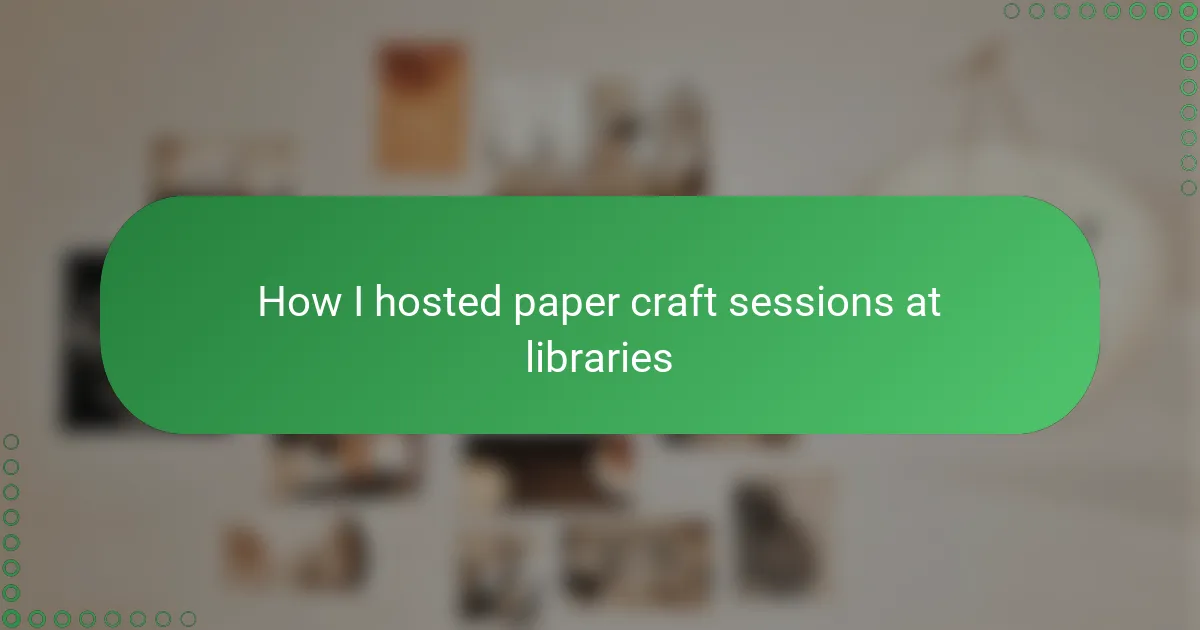Key takeaways
- Handmade paper crafts foster creativity and mindfulness, transforming simple paper into intricate art through techniques like folding and cutting.
- Quality materials are essential; choosing the right paper and tools enhances the crafting experience and preserves the final piece’s beauty.
- Successful workshops require thoughtful planning, organization of materials, and creating a welcoming atmosphere to encourage participant engagement.
- Encouraging personalization and celebrating small achievements can enhance participants’ confidence and enjoyment during crafting sessions.

Introduction to handmade paper crafts
Handmade paper crafts have a unique charm that machine-made items simply can’t replicate. I remember the first time I folded an intricate paper flower—it felt like I was creating something truly alive from just a simple sheet. Have you ever noticed how the texture and weight of handmade paper add an extra layer of meaning to any craft?
There’s something deeply satisfying about working with materials that have a story and character of their own. When I hold a piece of handmade paper, I connect not only with my craft but also with the traditions and artistry behind its creation. Isn’t it fascinating how a humble piece of paper can transform into a work of art with a few folds, cuts, or glues?
Handmade paper crafts invite creativity and mindfulness. From cutting delicate shapes to layering textures, this art form encourages patience and attention to detail. It’s these small moments of focus that make the crafting experience so rewarding and, honestly, a little magical in my opinion.
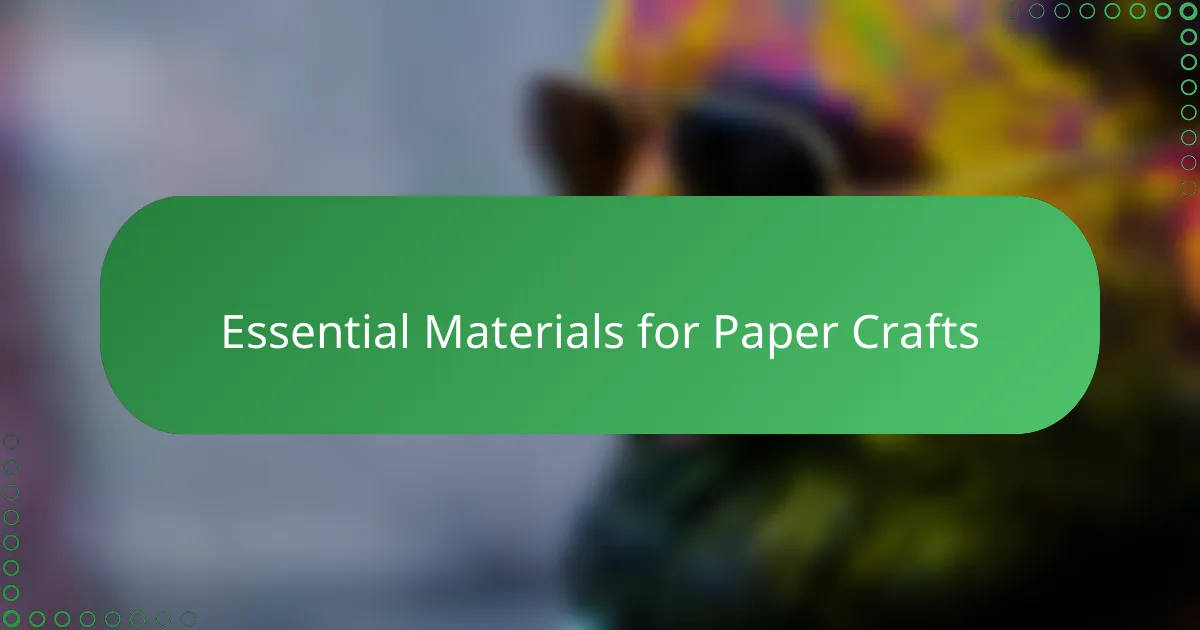
Essential materials for paper crafts
When I first gathered materials for my paper craft sessions, I quickly realized that quality paper is the heart of the project. Handmade paper, with its softness and varied texture, feels so different from standard craft sheets—I often find myself gently stroking it, appreciating its natural imperfections. Have you ever noticed how the weight of paper can change the whole look and feel of a finished piece?
Besides paper, I always keep a trusty pair of scissors and a precision craft knife nearby. These tools give me the control I need to create delicate cuts and intricate designs without frustration. It’s amazing how something as simple as the right scissors can boost your confidence and elevate your craft.
Of course, adhesives are essential too, but I prefer using acid-free glue or double-sided tape to keep everything neat and long-lasting. I remember once rushing with a regular glue stick, only to have my paper warp and wrinkle—it taught me to choose my supplies carefully. Isn’t it interesting how the right materials not only make crafting easier but also preserve the beauty of the final piece?
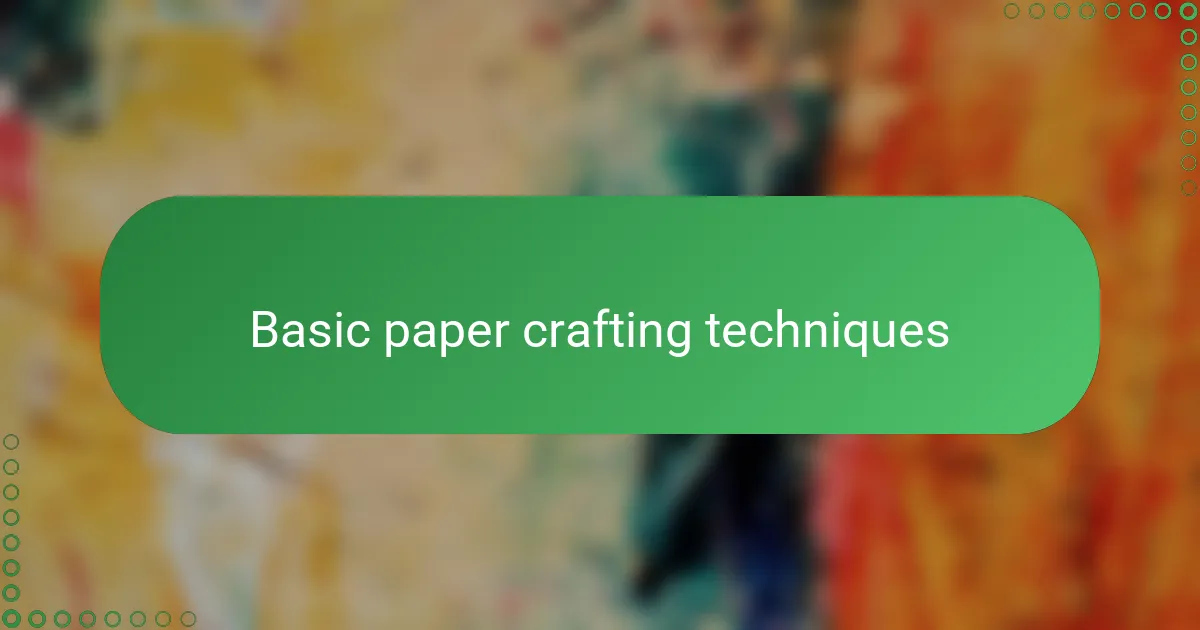
Basic paper crafting techniques
Working with basic paper crafting techniques always reminds me of how every fold and cut breathes life into a flat sheet. Folding, for instance, isn’t just about precision—it’s about feeling the paper’s response under your fingers. Have you ever noticed how a small crease can define an entire shape, turning simple paper into something three-dimensional?
Cutting is another foundational skill that’s deceptively simple. Early on, I struggled to make clean, smooth edges until I learned to trust my tools and slow down. There’s a certain satisfaction in watching a delicate pattern emerge as you carefully follow each line with scissors or a craft knife—almost like revealing a hidden design.
And then there’s layering and gluing, which I think is where paper crafting gets really fun. I once tried to rush through this step and ended up with warped pages and frustrated hands. Now, I always take my time with acid-free glue, appreciating how each layer builds texture and depth without losing paper’s natural beauty. Do you find that slowing down makes the creative process even more enjoyable? Because for me, it absolutely does.
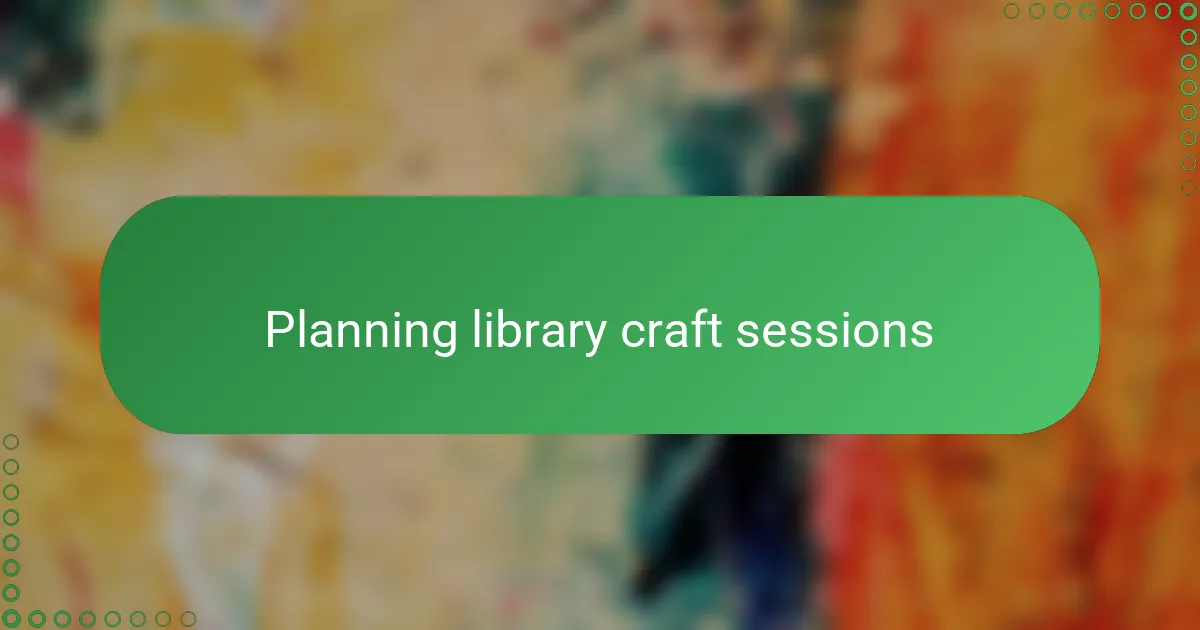
Planning library craft sessions
Planning library craft sessions starts with understanding your audience and the space you’ll be working in. I learned early on that visiting the library beforehand and chatting with the staff made all the difference—they helped me gauge how many people might attend and what materials would be practical to use. Have you ever walked into a room and felt instantly more prepared just because you took a little time to get to know the space?
Deciding on the craft projects themselves requires a balance between creativity and simplicity. I remember trying a complicated paper folding project once, only to see frustrated faces around me—it taught me to choose activities that are doable in the session’s time frame and accessible to all skill levels. Isn’t it better when crafting feels like a shared success rather than a puzzling challenge?
Lastly, I always make a checklist for supplies and set up a clear work area. Keeping things organized helps the session flow smoothly, and it’s amazing how much more relaxed everyone feels when they can easily find what they need. Have you noticed how a tidy space makes creativity blossom instead of stall? From my experience, it really does.
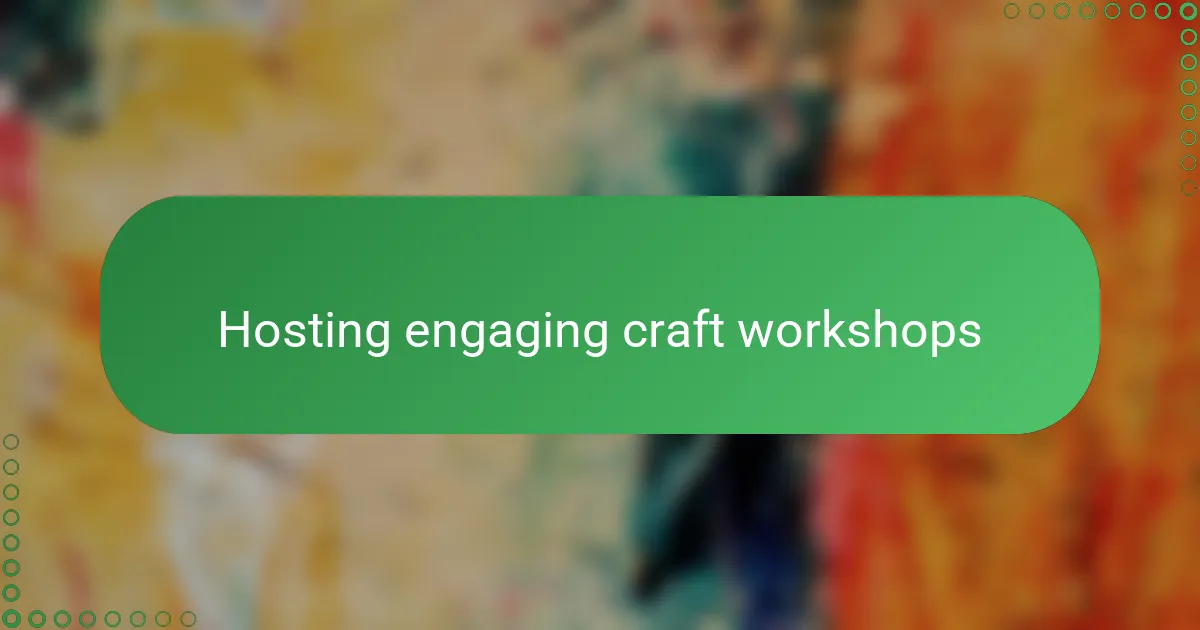
Hosting engaging craft workshops
Creating an engaging craft workshop is all about connection—between the materials, the project, and the participants. I’ve found that sharing stories about the paper’s texture or the inspiration behind a design often sparks curiosity and warmth in the room. Do you remember a time when a simple comment or anecdote made your own crafting experience more memorable?
Keeping everyone involved means balancing guidance with freedom. I like to demonstrate each step clearly, but then encourage participants to add their own twists. It’s delightful to see their faces light up when they realize their creativity is steering the project. Have you noticed how a little encouragement can transform hesitation into excitement?
Finally, atmosphere matters more than I expected. Playing soft music, arranging seating so people can chat, and making sure tools are within easy reach all create a relaxed vibe. It’s in these subtle touches that the workshop feels less like a class and more like a shared adventure. From my experience, these moments of lightheartedness often lead to the best crafting memories.
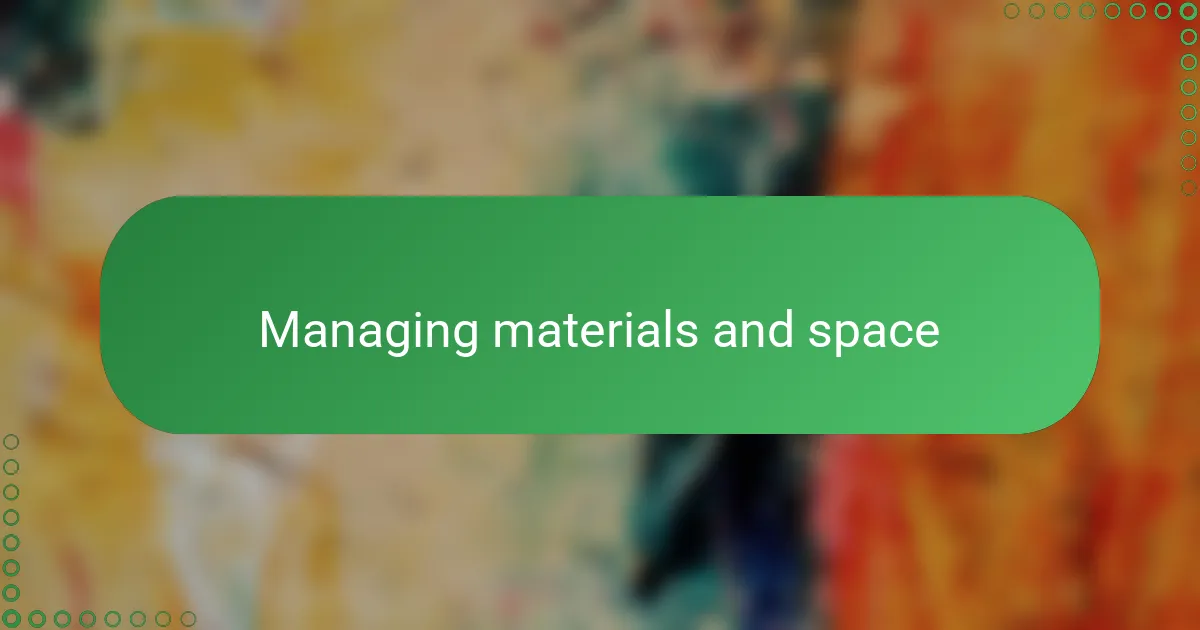
Managing materials and space
Managing materials and space required a bit of trial and error for me. At first, I tried bringing too many paper types and tools, which cluttered the table and overwhelmed participants. Have you ever noticed how limited space can turn a creative session into a chaotic scramble? That experience showed me the value of streamlining—selecting just a few essential materials that offer variety without causing confusion.
I found organizing materials into labeled bins and trays made a huge difference. When each tool and paper type has a designated spot, it’s easier for everyone to stay focused and dive into the craft. Plus, having a clear workspace encourages a calm mindset—something I always appreciate when I’m trying to concentrate on intricate folds or delicate cuts.
Space management also means thinking about how people move and work together. At one session, I arranged tables in a way that allowed participants to chat easily without bumping into each other or getting tangled in supplies. It felt more welcoming, and honestly, it lifted the whole atmosphere. Doesn’t a comfortable space just invite more creativity? For me, that’s an essential part of a successful paper craft gathering.
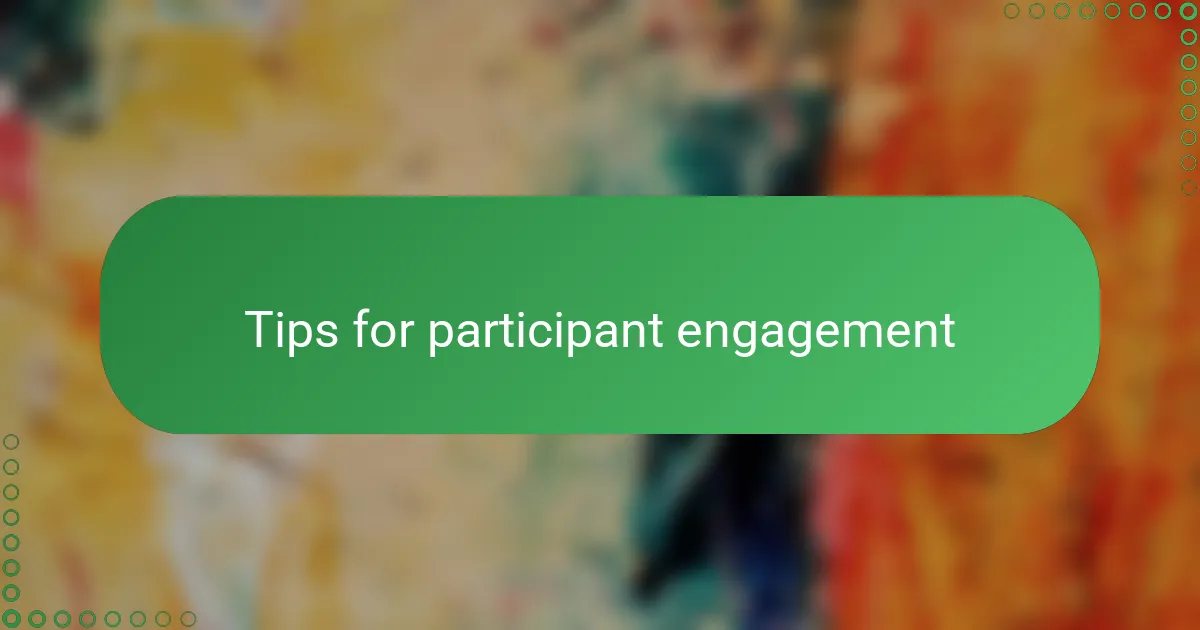
Tips for participant engagement
Keeping participants engaged can be a bit of an art in itself. I found that asking open-ended questions during the session, like “What inspired your color choice?” or “Have you tried this fold before?”, really sparks conversations and helps everyone feel connected. Don’t you think sharing these little moments makes the crafting experience richer?
Another trick I swear by is encouraging participants to personalize their projects. When I suggest adding their own flair—like tweaking a design or mixing papers—their excitement visibly grows. It’s amazing how ownership over a piece can turn hesitation into pride and motivation.
Lastly, I always make sure to celebrate each step along the way, whether it’s a neat fold or a clever layering technique someone nailed. Compliments and positive feedback seem to boost confidence and keep the energy flowing. Have you noticed how a little encouragement can turn a quiet room into a lively, happy crafting community? I certainly have.
